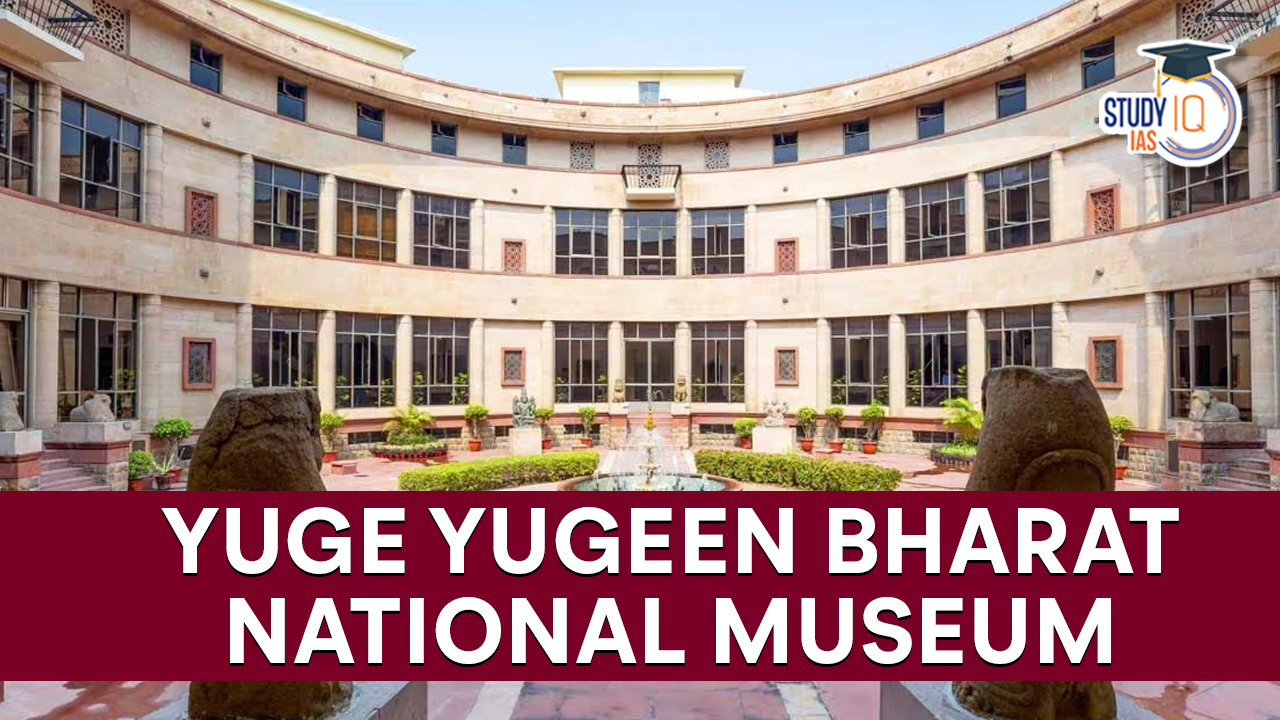Table of Contents
India and France have joined hands to create the Yuga Yugeen Bharat National Museum, a landmark project under the Central Vista Redevelopment Project. This museum, set to be the largest in the world, will span an impressive 1.55 lakh square metres across Delhi’s iconic North and South Blocks. The collaboration highlights the merging of India’s rich cultural heritage with France’s expertise in world-class museum design and management.
India-France to Develop World’s Largest Museum in Delhi
India and France have partnered to create the Yuga Yugeen Bharat National Museum as part of the Central Vista Redevelopment Project. Spanning 1.55 lakh square metres across Delhi’s historic North and South Blocks, the museum will surpass The Louvre as the world’s largest. Announced by PM Modi in May 2023, the project will employ adaptive reuse to preserve architectural heritage. The North Block will be repurposed by June 2026, followed by the South Block. France’s expertise in cultural landmark design will guide its development, symbolizing strengthened India-France ties and showcasing India’s rich cultural legacy on a global stage.
Yuge Yugeen Bharat National Museum
The North and South blocks in New Delhi will house the Yuge Yugeen Bharat National Museum, which is slated to be the World’s Largest museum in the entire globe. The museum’s eight thematic sections will cover more than 5,000 years of Indian history.
During the opening of the International Museum Expo at Pragati Maidan in Delhi on International Museum Day, Prime Minister Narendra Modi revealed a virtual tour of the museum. PM Modi then celebrated the opening of the Bharat Mandapam complex, formerly known as the International Exhibition-cum-Convention Centre (IECC), which was built on a 123-acre campus for nearly 2,700 crore rupees.
Yuge Yugeen Bharat Museum Details
According to the organizers, the Yuge Yugeen Bharat National Museum would feature eight thematic sections that will highlight India’s almost 5,000-year history of civilization. It will be constructed in Delhi’s North and South Blocks. It would contain 950 rooms distributed over a basement and three stories, covering a 1.17 lakh square meter space. The eight sections will cover ancient Indian knowledge, the medieval era, the transitional period between the medieval and modern eras, modern India, colonial control, the freedom movement, and the 100 years starting in 1947.
Yuge Yugeen Bharat Museum Objective
The primary objective of the Yuga Yugeen Bharat National Museum is to preserve and showcase India’s vast and diverse cultural heritage, making it accessible to a global audience. It aims to:
- Serve as a cultural landmark symbolizing India’s rich history and traditions.
- Blend modern museum practices with traditional architectural preservation.
- Strengthen India’s global presence in the cultural domain.
Key Highlights of the Yuga Yugeen Bharat National Museum
- World’s Largest Museum: Once completed, it will surpass The Louvre in Paris, currently the largest museum in the world.
- Location and Scope: The museum will be developed across the North and South Blocks of the Parliament, housing India’s cultural legacy.
- Adaptive Reuse: The project will utilize France’s expertise in adaptive reuse, ensuring that the historic architecture of these blocks is preserved while serving a new purpose.
- Phased Development:
-
- Phase 1: The North Block will be retrofitted into a museum space by June 2026.
- Phase 2: Transition of the South Block after relocating existing ministries to the Common Central Secretariat (CCS).
Yuge Yugeen Bharat National Museum Thematic Segments
Yuge Eight thematic sections of the Yuge Yugeen Bharat National Museum will tell the history of India from the prehistoric era to the present. Ancient to mediaeval, mediaeval, and mediaeval to the transition period, modern India, colonial control, the freedom movement, and the 100 years from 1947 onwards are some of the topics covered in the chapters:
Ancient Indian knowledge
This section will highlight the rich and varied knowledge systems of India, including astronomy, medicine, town planning, the Vedas, and the Upanishads. Additionally, some of the historic artefacts and writings that serve as examples of these knowledge systems will be displayed.
Ancient to Medieval
The Vijayanagara Empire, the Mughal Empire, the Chola Empire, and other dynasties that dominated India from the Mauryan Empire through the Gupta periods will be highlighted in this section. The display will include works of art, architecture, literature, religion, and culture from those eras.
Medieval
This section will concentrate on India’s mediaeval era, which saw the rise of new kingdoms including the Maratha Empire, Delhi Sultanate, and Bahmani Sultanate. Additionally, it will examine how many cultures and religions, like Islam, Sikhism, Christianity, etc., interact and influence one another.
Medieval to Transition Phase
This section will discuss India’s transition from the Middle Ages to the Modern Era, which saw the emergence and collapse of numerous empires, including the Sikh Empire, the Bengal Subah, the Mysore Kingdom, and others. Additionally, it will show how society and the economy changed during this time.
Modern India
This section of the world’s largest museum will present India’s modern history beginning in the 18th century when British control began and had an impact on a number of facets of Indian civilization. The accomplishments and difficulties India has faced since becoming independent will also be highlighted.
Colonial Rule
This section will tell the tale of colonial control in India by various European nations, including the British, Dutch, Portuguese, and French. Additionally, it will look at the uprising and resistance movements that arose in opposition to colonial rule.
Freedom Struggle
This segment will celebrate the freedom struggle of India from colonial rule that spanned over a century. It will showcase the leaders and Indian National Movements that contributed to the liberation of India from British rule.
100 years from 1947 onwards
The goals and accomplishments of India in the post-independence era will be discussed in this section. It will highlight India’s advancement and growth in a variety of areas, including democracy, the economy, science, technology, culture, and sports, among others.
World Largest Museum UPSC
The foundation stone of the existing Yuge Yugeen Bharat National Museum building was laid by India’s first Prime Minister, Jawaharlal Nehru, on May 12, 1955. The Kartavya Path, formerly known as Rajpath, is a ceremonial axis stretching from India Gate to Raisina Hill. With the completion of the Yuge Yugeen Bharat National Museum, India will boast an extraordinary cultural heritage showcase befitting its rich history and traditions.
The current national museum, which is located on Janpath, will be replaced with the Yuge Yugeen Bharat Museum. As part of the project, the rich collections from the present National Museum building will be transferred to the North and South Block buildings, becoming a part of the Kartavya Path.


 UPSC CMS Admit Card 2025 Out: Download L...
UPSC CMS Admit Card 2025 Out: Download L...
 UPSC Study Material for Prelims & Ma...
UPSC Study Material for Prelims & Ma...
 NATO Countries List 2025, Members, Funct...
NATO Countries List 2025, Members, Funct...





















